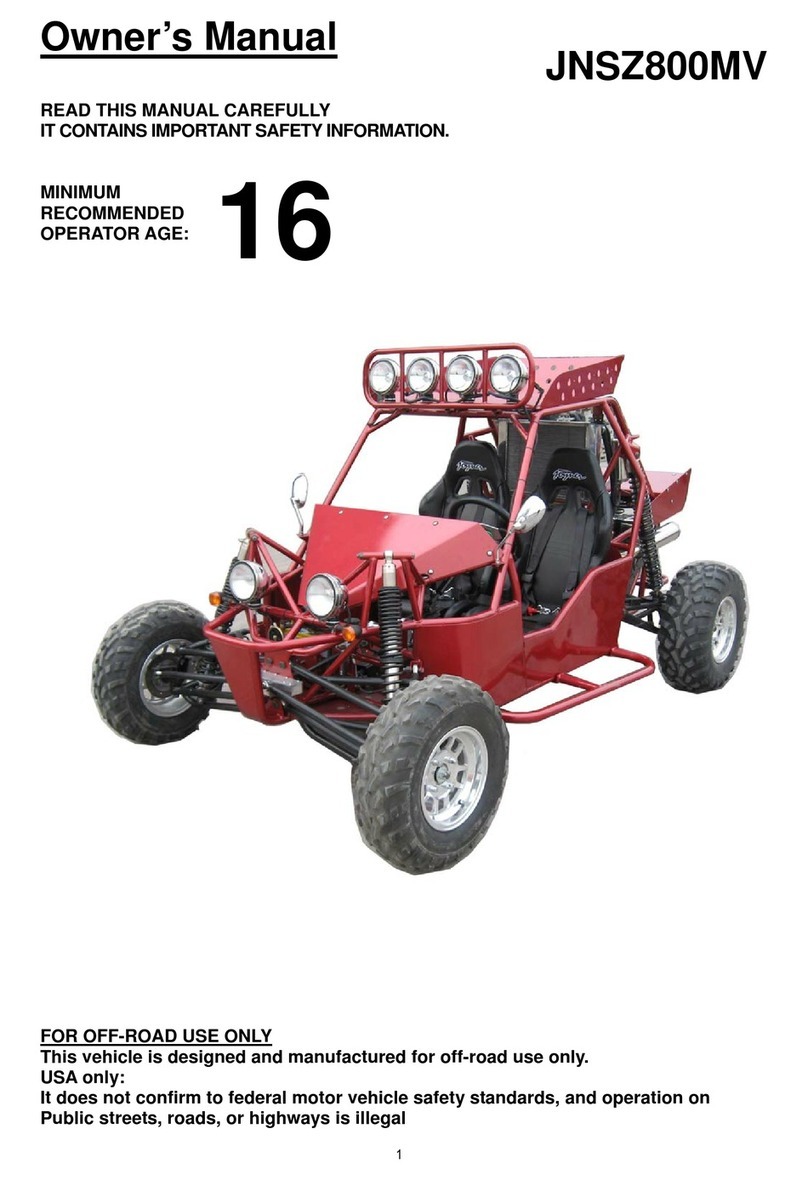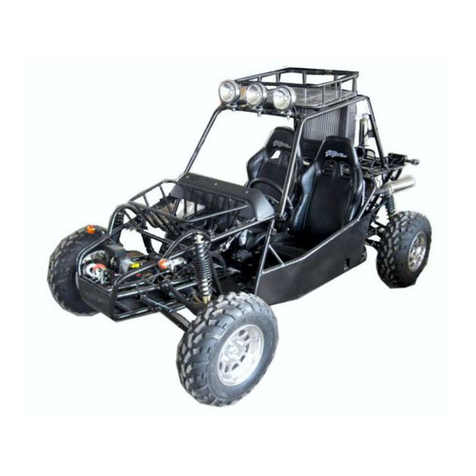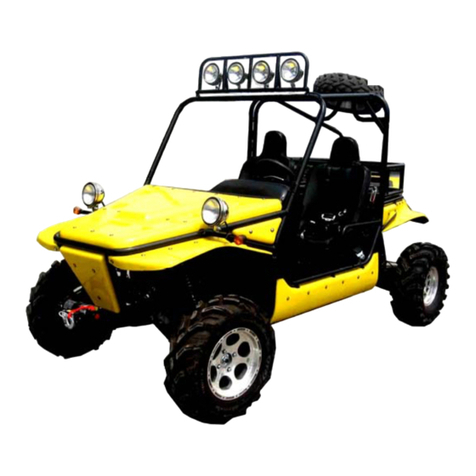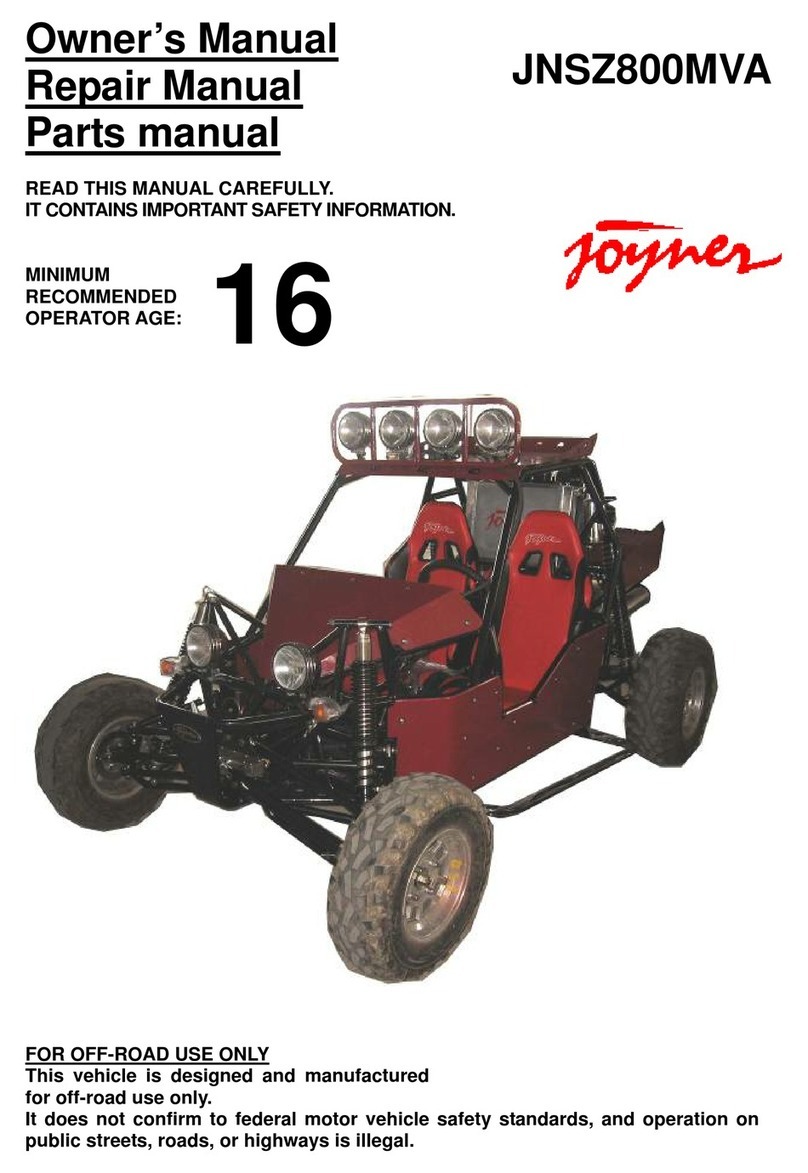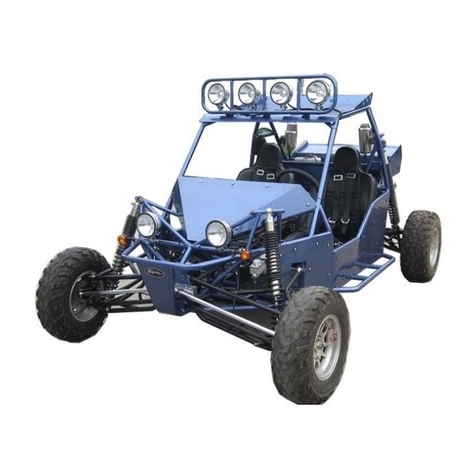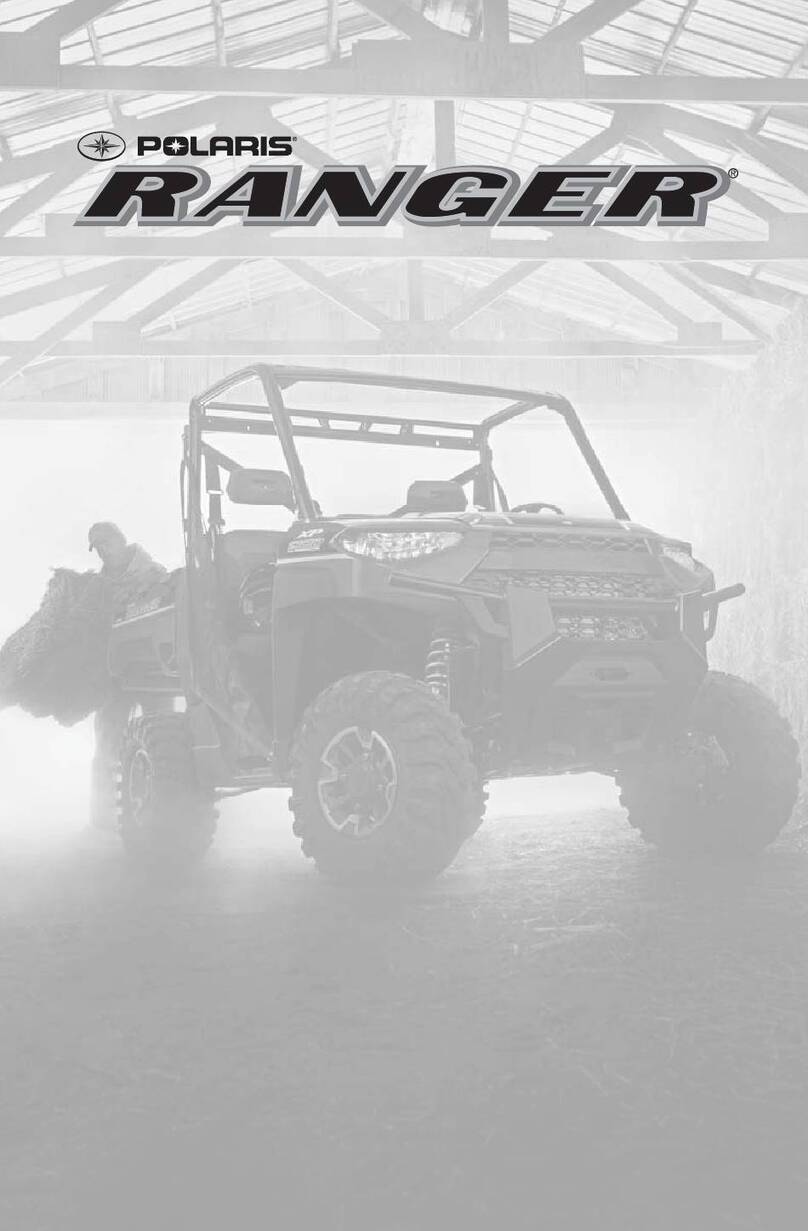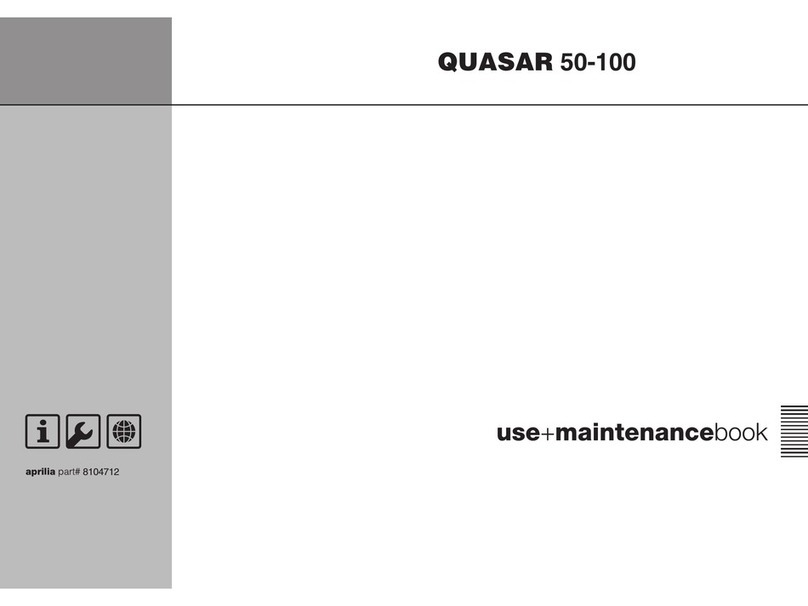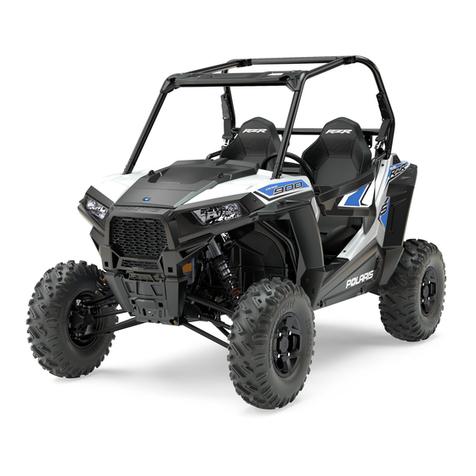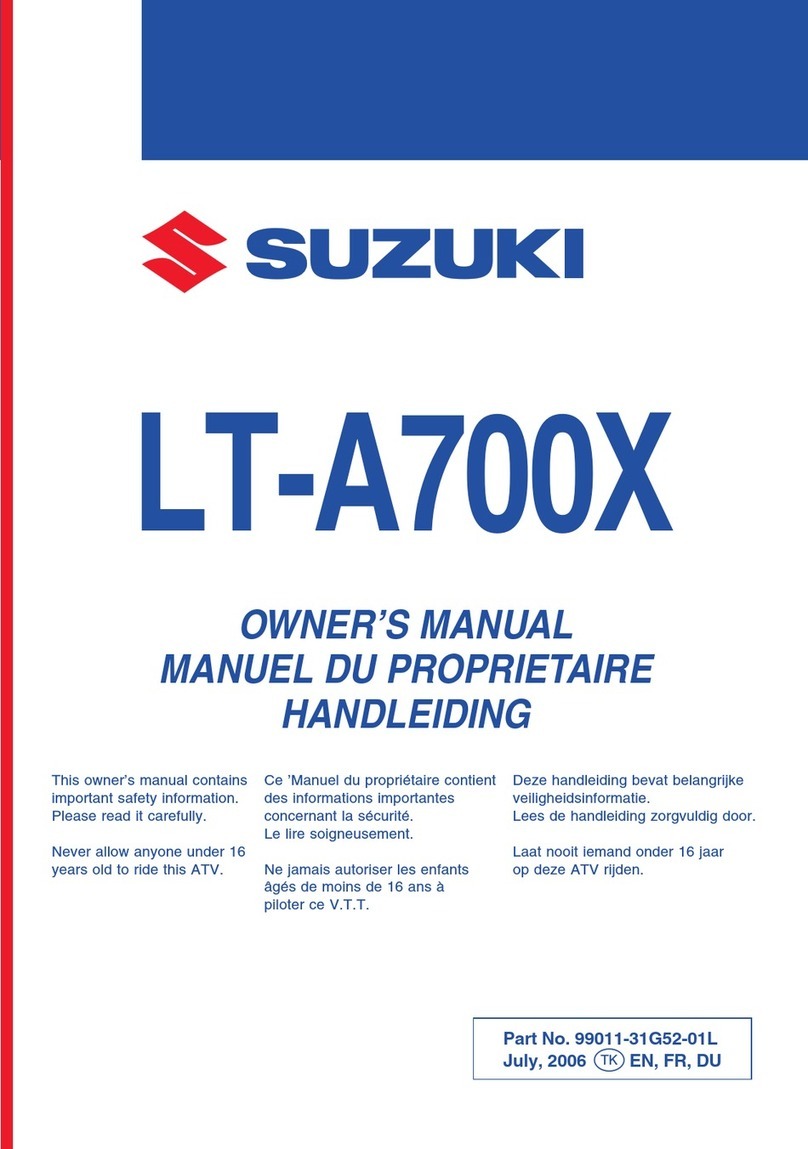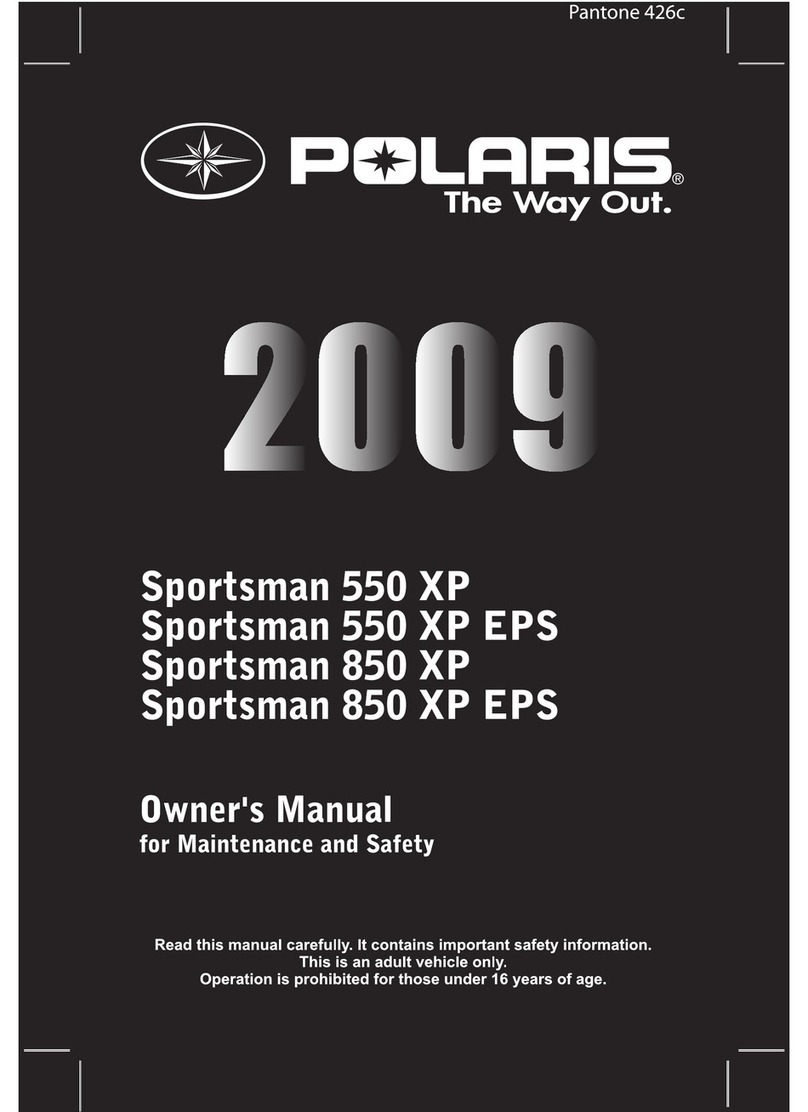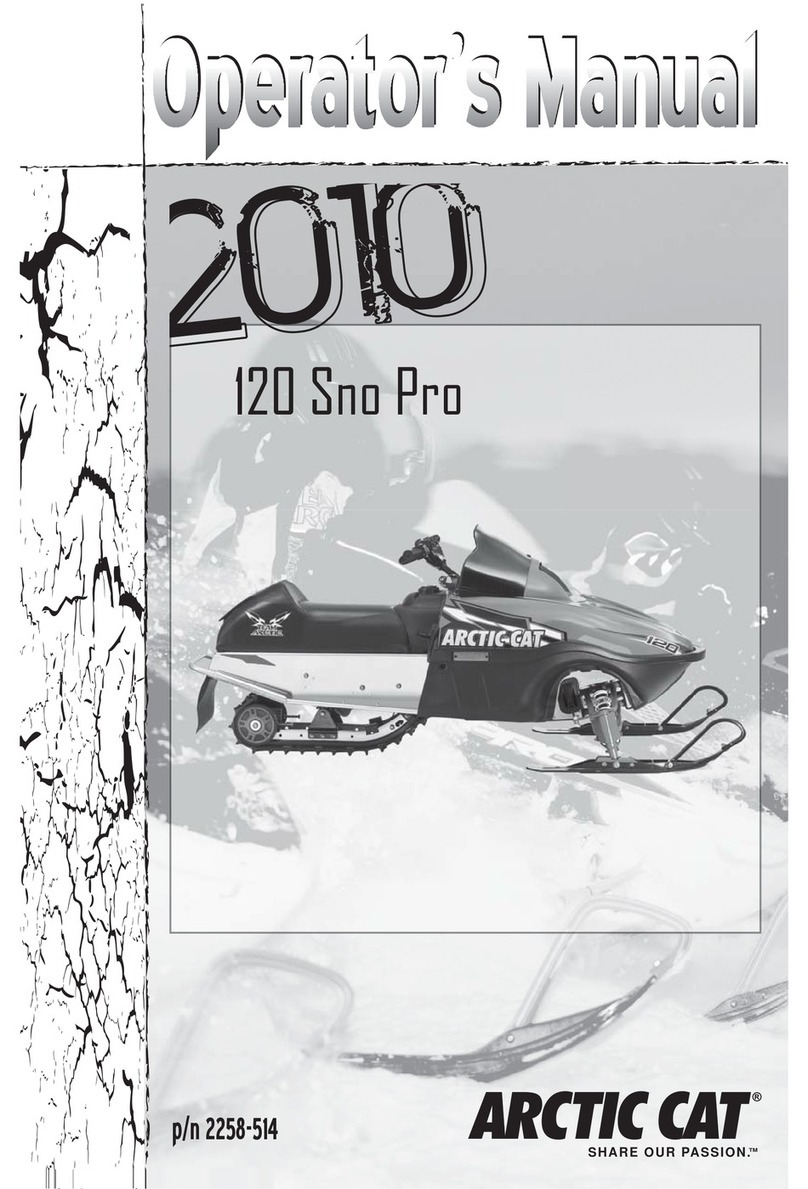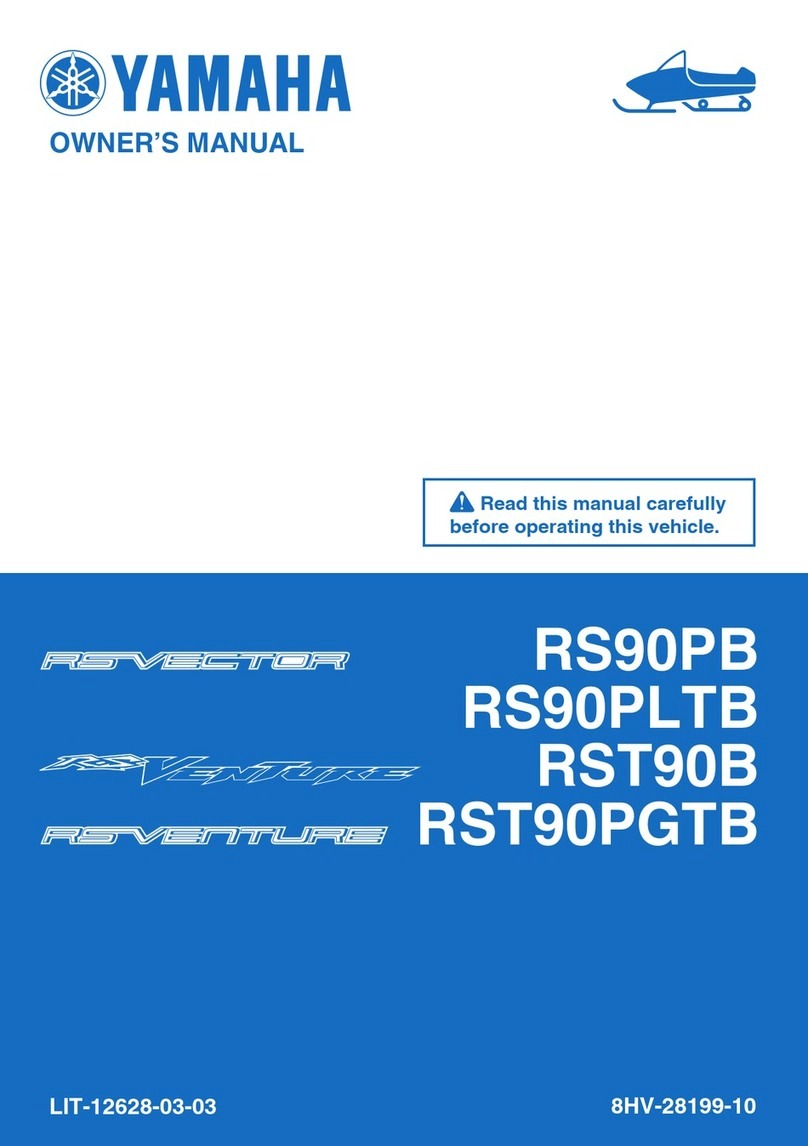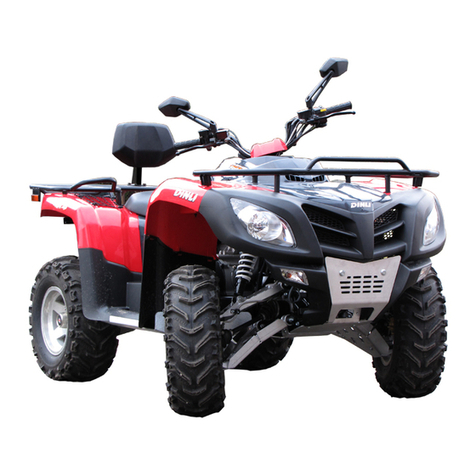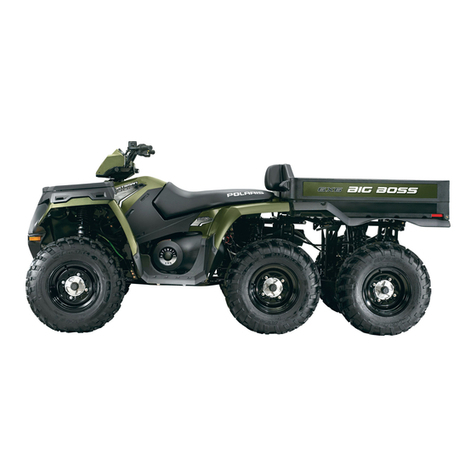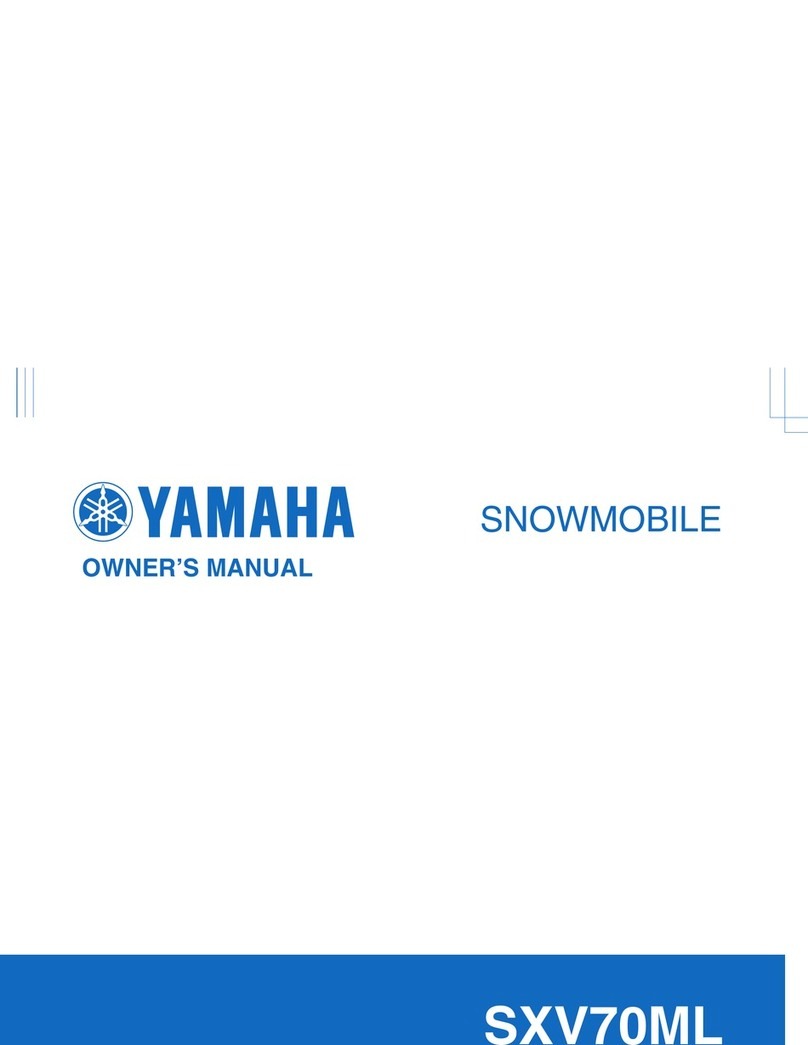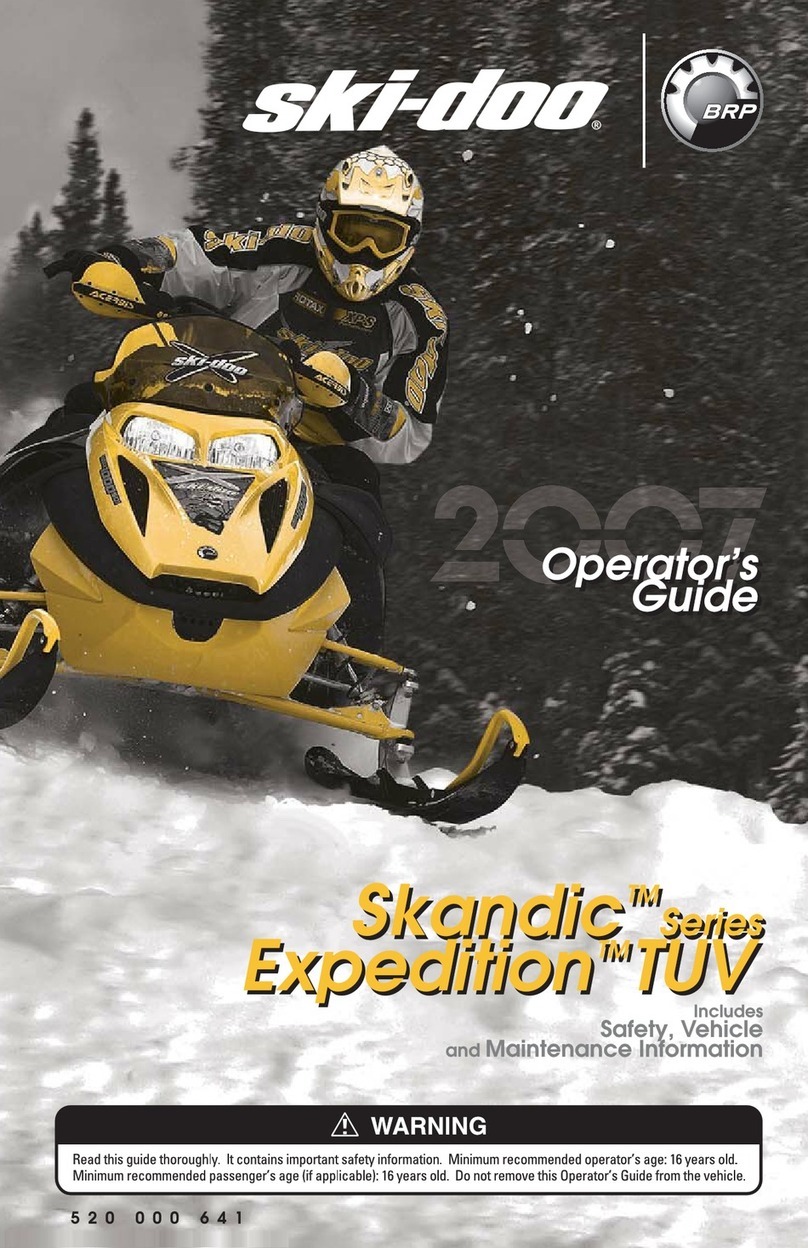This off-highway utility vehicle handles differently from other vehicles including cars
and ATVs. SEVERE INJURY OR DEATH can result if you do not follow these
instructions:
Read this manual and all labels carefully and follow the operating procedures
described.
This vehicle is designed to carry the driver and one passenger. Never carry
passengers in the cargo bed.
Always be sure the driver and passenger are wearing seat belts.
Never give a ride to a passenger who is too small to reach and hold the handgrip on
the enclosure.
Always avoid operating the vehicle on any paved surfaces, including sidewalks,
driveways, parking lots, and streets.
Never operate this vehicle on any public street, road, or highway, even a dirt or
gravel one.
Never operate this vehicle without wearing an approved motorcycle helmet that fits
properly. You should also wear eye protection (goggles or a face shield), gloves,
over-the-ankle boots, long-sleeved shirt or jacket, and long pants.
Never consume alcohol or drugs before or while operating this vehicle.
Never operate at speeds too fast for your skills or the conditions. Always go at a
speed that is proper for the terrain, visibility, operating conditions, and your
experience.
Never attempt jumps or other stunts.
Always inspect your vehicle each time you use it to be sure it is in safe operating
condition. Always follow the inspection and maintenance procedures and schedules
described in this manual.
Always keep both hands, arms, feet, and legs inside the vehicle at all times during
operation. Keep your feet on the floorboard. Never hold onto the enclosure except
when using the handgrip inside the enclosure. Otherwise, your hand could be injured
if it is caught between the enclosure and an obstacle outside the vehicle.
Always keep both hands on the steering wheel when driving.
Never wrap your thumbs and fingers around the steering wheel. This is particularly
important when driving in rough terrain. The front wheels will move right and left as
they respond to the terrain, and this movement will be felt in the steering wheel. A
sudden jolt could wrench the steering wheel around, and your thumbs or fingers
could be injured if they are in the way of the steering wheel spokes.
Always go slowly and be extra careful when operating on unfamiliar terrain. Always
be alert to changing terrain conditions when driving the vehicle.
Never operate on excessively rough, slippery, or loose terrain until you have learned
and practiced the skills necessary to control the vehicle on such terrain. Always be
especially cautious on these kinds of terrain.
Never turn at excessive speed. Practice turning at slow speeds before attempting to
turn at faster speeds. Do not attempt turns on steep inclines.
Never operate the vehicle on hills that are too steep for it or for your abilities. Go
straight up and down hills where possible. Maximum slope angle: 15º
6
